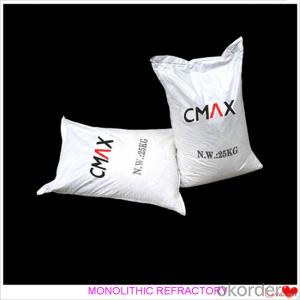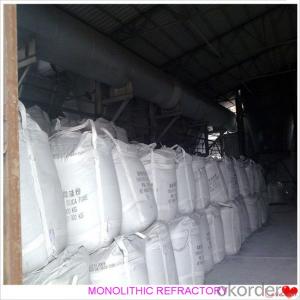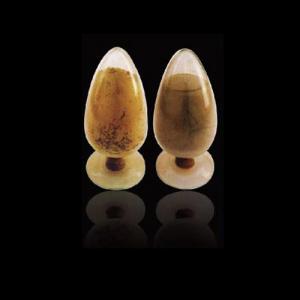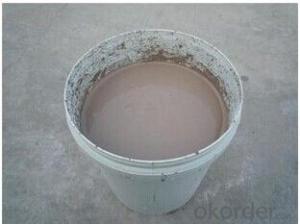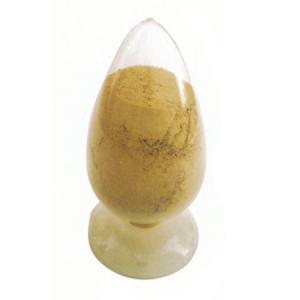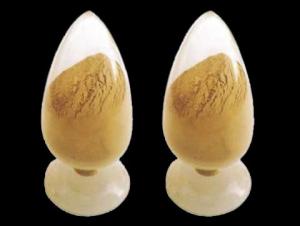High Alumina Castable For Fireplace and Industrial Furnace in Iron and Steel
- Loading Port:
- China main port
- Payment Terms:
- TT OR LC
- Min Order Qty:
- 1000 kg
- Supply Capability:
- 3000000 kg/month
OKorder Service Pledge
OKorder Financial Service
You Might Also Like
High Alumina Castable For Fireplace and Industrial Furnace in Iron and Steel
Product Description:
High alumina castable is manufactured according to international standards. The product is famous for its excellent abrasion resistance and low thermal conductivity. Further, these can be provided in different specifications as required by the clients. The High alumina castables are used high purity raw materials and additives as the main material, and made of under superfine powder adding technology.
Product Advantages:
The material has excellent structural stability and air tightness, and has high physical and chemical properties, also has a fine working ability.They should be used with the same material products.
Product Applications:
For feature of High alumina castable, they have excellent abrasion resistance, thermal shock resistance, high-temperature resistance, anti-corrode and have high intensity.
Designed for refractory lining of blast furnace iron and slag runners, skimmers and soon
They can be used in troughs of small and mid size BFs and in all positions of the troughs where fast tapping is required.
Product Specifications:
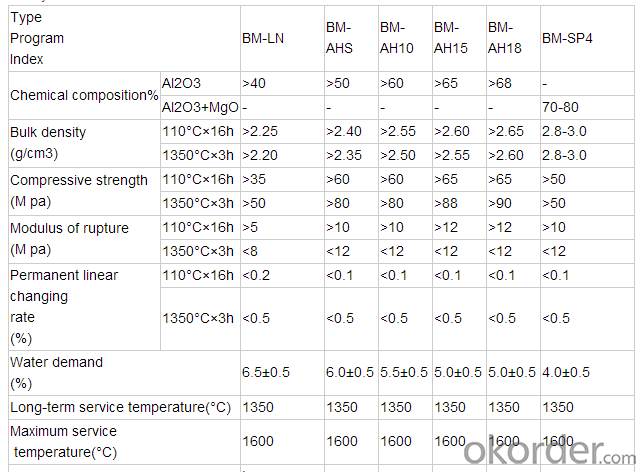
FAQ:
1. How you can control your quality?
For each production processing, we have complete QC system for the chemical composition
and Physical properties. After production, all the goods will be tested, and the quality certificate
will be shipped along with goods.
2. What's your delivery time?
It usually needs about 20days- 45 days after receiving the deposit.
3. Do you provide free samples?
Yes, we can provide a free sample for testing, If we have sample in stock,
The quantity based on the material type, The buyer should bear all the shipping costs.
4. What's your payment terms?
We can accept 30% deposit, 70% balance before shipment for ordrs over $ 2000.
5. Can we visit your Company?
Yes, certainly. You are very welcome to China and we will be honored to have a customer and friend.
Product Picture:
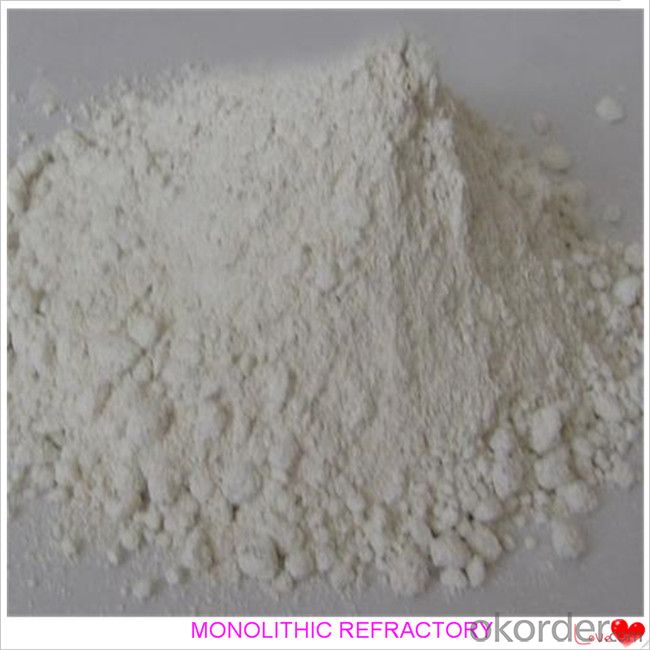
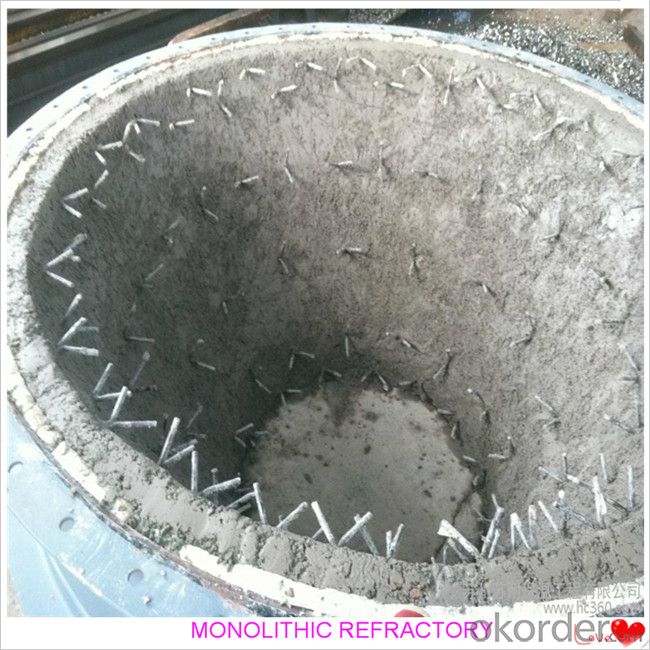
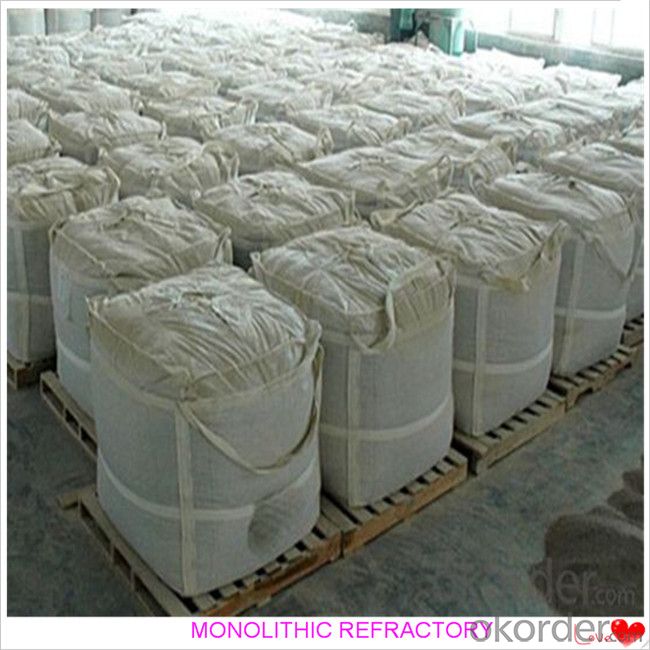
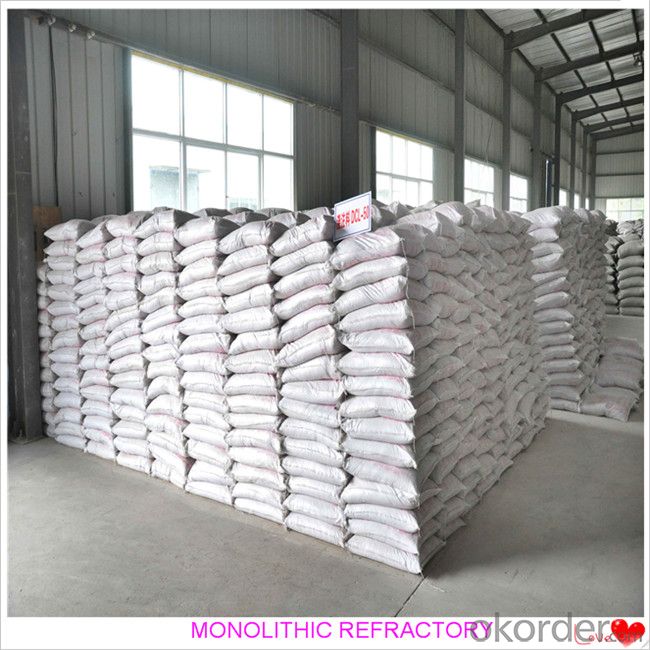
- Q:How do monolithic refractories impact the quality of iron and steel products?
- The quality of iron and steel products is greatly influenced by monolithic refractories. These refractories are extensively used in the lining of furnaces and other high-temperature environments where iron and steel undergo processing. To begin with, monolithic refractories play a vital role in insulating and safeguarding the furnace lining from the intense heat generated during the manufacturing of iron and steel. By maintaining the desired temperature, these refractories ensure consistent and proper heating of the metal, thereby achieving the desired product quality. Inadequate insulation would result in significant heat loss, leading to inefficient energy consumption and inconsistent product quality. Additionally, monolithic refractories have a significant impact on the overall cleanliness of iron and steel. During the production process, impurities and slag are formed, which can contaminate the metal if not managed properly. Refractories with high resistance to slag penetration and corrosion prevent these impurities from infiltrating the metal, ensuring a cleaner and purer final product. Moreover, monolithic refractories also contribute to the mechanical strength and durability of the furnace lining. The lining must withstand the harsh conditions and repeated thermal shocks encountered during the production process of iron and steel. A sturdy and well-designed refractory lining can resist cracking, spalling, and erosion, thereby prolonging the furnace's lifespan and reducing the risk of downtime. In conclusion, monolithic refractories have a profound impact on the quality of iron and steel products. They provide thermal insulation, prevent contamination, and ensure the mechanical integrity of the furnace lining. Manufacturers can optimize their production processes, enhance product quality, and improve overall operational efficiency by selecting the appropriate refractory material and maintaining it correctly.
- Q:Can monolithic refractories be used for the lining of ladle refining furnaces and VOD converters?
- Yes, monolithic refractories can be used for the lining of ladle refining furnaces and VOD (Vacuum Oxygen Decarburization) converters. Monolithic refractories are versatile materials that can be shaped and installed in various applications, including high-temperature environments like ladle refining furnaces and VOD converters. Monolithic refractories are composed of a single, homogeneous material, which makes them easy to install and repair. They can be either cast or gunned in place, providing flexibility in lining design and installation. The lining of ladle refining furnaces and VOD converters requires materials that can withstand high temperatures, chemical reactions, and mechanical stresses. Monolithic refractories, with their excellent thermal shock resistance and resistance to chemical attack, are well-suited for these demanding applications. In ladle refining furnaces, monolithic refractories are used to line the ladle, which holds and processes molten metal. These refractories help maintain the desired temperature and protect the ladle from the corrosive effects of molten metal and slag. They also provide insulation to minimize heat loss and improve energy efficiency. VOD converters are used in the steelmaking process to reduce the carbon content of molten steel. Monolithic refractories are used to line the converter's vessel and maintain the necessary temperature for the decarburization reaction. They also provide protection against the corrosive effects of molten metal and slag, ensuring the longevity and performance of the converter. Overall, monolithic refractories offer excellent properties for the lining of ladle refining furnaces and VOD converters. Their versatility, ease of installation, and resistance to high temperatures and chemical attack make them an ideal choice for these critical applications in the steel industry.
- Q:How do monolithic refractories contribute to reducing emissions in iron and steel processes?
- Monolithic refractories play a crucial role in reducing emissions in iron and steel processes by providing superior insulation, increased energy efficiency, and improved control over the production process. These refractories are designed to withstand extreme temperatures and harsh conditions, effectively minimizing heat loss and reducing the need for excessive fuel consumption. By creating a highly insulated environment, monolithic refractories enable better temperature control, leading to optimized combustion and reduced emissions of greenhouse gases. Additionally, their high resistance to wear and corrosion helps prevent the formation of pollutants, thereby contributing to a cleaner and more sustainable iron and steel industry.
- Q:How do monolithic refractories withstand high temperatures and thermal shocks?
- Due to their unique composition and design, monolithic refractories possess the ability to endure high temperatures and thermal shocks. These refractories, referred to as "monolithic" due to their single-piece or structured form, can withstand extreme heat and sudden temperature changes commonly experienced in high-temperature applications. The utilization of high-quality raw materials is a key factor enabling monolithic refractories to withstand high temperatures. These materials are meticulously chosen for their heat and thermal stress resistance. Common components include silica, alumina, magnesia, and other refractory minerals with high melting points. Furthermore, the manufacturing process plays a vital role in enhancing the thermal resistance of monolithic refractories. The raw materials are blended with binders, such as clay or cement, to create a homogeneous mixture. This mixture is then shaped and installed in its final position, either through pouring or gunning, depending on the application. The binder ensures that the refractory maintains its shape and integrity during thermal cycling. In addition, monolithic refractories exhibit excellent thermal conductivity and low thermal expansion properties. This enables efficient heat transfer and dissipation, minimizing the risk of thermal stress and cracking. The low thermal expansion also reduces the likelihood of spalling or delamination, which is crucial for withstanding thermal shocks. Another contributing factor to the high-temperature resistance of monolithic refractories is their ability to form a protective layer or slag on the surface. This layer acts as a barrier, preventing direct contact between the refractory and corrosive materials or aggressive atmospheres. It significantly improves the refractory's longevity and resistance to thermal shocks. Overall, the combination of high-quality raw materials, meticulous manufacturing techniques, and advantageous thermal properties allows monolithic refractories to endure high temperatures and thermal shocks. These refractories find extensive use in various industries, including steel, cement, glass, and petrochemical, as reliable linings in furnaces, kilns, and other high-temperature equipment.
- Q:How do monolithic refractories perform in rotary hearth furnace applications?
- The performance of monolithic refractories in rotary hearth furnaces is well-known. These refractories are specifically designed to endure the extreme temperatures and harsh conditions found in these furnaces, making them the ideal choice for this particular application. One major advantage of monolithic refractories is their resistance to thermal shock. In rotary hearth furnaces, the material being processed is subjected to rapid heating and cooling cycles, which can cause significant stress on the refractory lining. Monolithic refractories have excellent thermal conductivity and low thermal expansion, enabling them to withstand these temperature fluctuations without cracking or spalling. Another important characteristic of monolithic refractories is their exceptional resistance to abrasion. In rotary hearth furnaces, the material being processed may contain abrasive particles that can wear down the refractory lining over time. Monolithic refractories are formulated with high-quality aggregates and binders that provide superior abrasion resistance, resulting in a longer lifespan for the lining. Moreover, monolithic refractories exhibit good chemical resistance, making them suitable for various applications in rotary hearth furnaces. They can withstand exposure to different chemical substances, such as molten metals, slags, and gases, without undergoing significant chemical reactions or degradation. This chemical stability ensures that the refractory lining remains intact and performs well in the demanding environment of a rotary hearth furnace. Additionally, monolithic refractories offer excellent flexibility during installation. Unlike traditional brick or tile refractories, which require complex installation procedures, monolithic refractories can be easily shaped and applied in-situ using methods like gunning, casting, or ramming. This flexibility allows for quicker and more efficient repairs or replacements of the lining, reducing downtime and maintenance costs. In conclusion, monolithic refractories are highly reliable and efficient in rotary hearth furnace applications. Their ability to withstand thermal shock, abrasion, and chemical attack, along with their easy installation, make them the preferred choice for lining materials in these demanding environments.
- Q:What are the recommended drying procedures for monolithic refractories?
- The recommended drying procedures for monolithic refractories vary depending on the specific type and composition of the refractory material. However, there are some general guidelines that can be followed. Firstly, it is important to remove any excess moisture from the refractory material before drying. This can be done by storing the refractory in a dry environment or using a dehumidifier if necessary. Once the refractory is adequately dried, the drying process can begin. It is recommended to start with a low drying temperature to prevent cracking or spalling of the refractory. Gradually increase the temperature over time to allow for the gradual release of moisture. This can be done by using a controlled drying oven or furnace. The drying time will vary depending on the thickness and composition of the refractory. It is important to follow the manufacturer's guidelines for the specific refractory material being used, as they will provide the recommended drying time and temperature range. During the drying process, it is important to monitor the refractory closely for any signs of cracking or spalling. If any cracks or damage occur, the drying should be stopped immediately to prevent further damage. It may be necessary to repair or replace the damaged areas before continuing with the drying process. Once the refractory is fully dried, it is important to slowly cool it down to prevent thermal shock. This can be done by gradually reducing the temperature over time or allowing the refractory to cool naturally in a controlled environment. Overall, the recommended drying procedures for monolithic refractories involve gradually increasing the temperature over time, monitoring for any signs of damage, and slowly cooling down the refractory to prevent thermal shock. It is important to follow the manufacturer's guidelines and recommendations for the specific refractory material being used to ensure proper drying and optimal performance.
- Q:What are the main applications of monolithic refractories in the iron and steel industry?
- The iron and steel industry heavily relies on monolithic refractories due to their versatile applications. In this industry, monolithic refractories play a vital role in several areas: 1. Blast Furnaces: When converting iron ore into molten iron, blast furnaces are crucial components. The inner walls of blast furnaces are lined with monolithic refractories, which provide insulation and protection against extreme temperatures and corrosive environments. These refractories maintain the furnace's integrity and efficiency, ensuring seamless operation and extended service life. 2. Ladles and Tundishes: Ladles and tundishes are vessels used to transport molten metal from blast furnaces to the next processing stage. Monolithic refractories are used to line these vessels, as they can withstand high temperatures and chemical reactions that occur during metal transfer. They prevent heat loss, minimize metal contamination, and enhance overall process efficiency. 3. Steelmaking Furnaces: Electric arc furnaces (EAFs) and basic oxygen furnaces (BOFs) are among the various types of steelmaking furnaces that extensively employ monolithic refractories. These furnaces require lining materials that can withstand extreme temperatures, chemical reactions, and mechanical stresses. Monolithic refractories provide exceptional thermal insulation, erosion resistance, and structural integrity, enabling efficient and reliable steel production. 4. Continuous Casting: Continuous casting is a widely used method for producing large quantities of steel. During this process, molten steel is continuously poured into a water-cooled mold, solidifying it into solid steel billets or slabs. Monolithic refractories are used to line the mold's walls and floor, ensuring thermal insulation and preventing the solidified steel from adhering to the mold. They help maintain the desired casting shape and improve the final product's quality. 5. Reheating Furnaces: Reheating furnaces are used to heat steel billets or slabs before further processing. Monolithic refractories line the walls and roof of these furnaces since they can withstand high temperatures and thermal cycling. They provide insulation, reduce heat loss, and enhance the reheating process's efficiency. In conclusion, monolithic refractories are indispensable in the iron and steel industry as they possess high-temperature resistance, chemical stability, and mechanical strength. They contribute to the durability and efficiency of various equipment and processes, ensuring seamless operations and high-quality steel production.
- Q:How do monolithic refractories contribute to the overall efficiency of iron and steel production?
- Monolithic refractories play a crucial role in enhancing the overall efficiency of iron and steel production. These refractories, which are made from a single material, provide exceptional thermal insulation, resistance to high temperatures, and excellent mechanical strength. By lining the furnaces, ladles, and other equipment used in the production process, monolithic refractories help in maintaining and regulating the required high temperatures for melting, refining, and shaping iron and steel. This insulation reduces heat loss, minimizes energy consumption, and ensures a more efficient and cost-effective production process. Additionally, the mechanical strength of monolithic refractories allows for better protection against wear and tear, resulting in increased equipment lifespan and reduced downtime for repairs and maintenance. Overall, the use of monolithic refractories significantly contributes to the efficiency, productivity, and sustainability of the iron and steel production industry.
- Q:What are the key trends in the use of monolithic refractories in the iron and steel industry?
- It is worth noting that there are several notable trends in the use of monolithic refractories in the iron and steel industry. First and foremost, there is an increasing demand for monolithic refractories due to their superior performance characteristics in comparison to traditional brick refractories. Monolithic refractories provide higher thermal shock resistance, superior insulation properties, and improved resistance to chemical attacks. As a result, they are being used more extensively in various applications within the iron and steel industry. Secondly, there is a shift towards the utilization of low-cement and ultra-low cement castables in monolithic refractories. These materials contain a reduced amount of cement, leading to enhanced refractory properties such as increased strength, better corrosion resistance, and improved resistance to thermal spalling. This trend is driven by the need to enhance the overall efficiency and longevity of refractory linings in iron and steel manufacturing processes. Another significant trend is the development of advanced monolithic refractories that prioritize sustainability and environmental performance. The iron and steel industry is facing mounting pressure to reduce its carbon footprint and minimize its impact on the environment. Consequently, there is a growing emphasis on the use of environmentally friendly binders and additives in monolithic refractories. These novel materials not only offer excellent refractory properties but also contribute to the industry's sustainability objectives. Moreover, there is an increasing focus on the development of monolithic refractories capable of withstanding extreme operating conditions. Iron and steel manufacturing processes involve high temperatures, aggressive chemical environments, and severe mechanical stresses. Consequently, there is a need for monolithic refractories that can withstand these harsh conditions without compromising their performance. The industry is investing in research and development to create refractories that exhibit exceptional resistance to thermal shock, abrasion, and erosion. Lastly, there is a growing adoption of digital and smart technologies for the monitoring and maintenance of monolithic refractories. Advances in sensor technology and data analytics have made it possible to collect real-time data on the condition and performance of refractory linings. This enables proactive maintenance, early detection of potential issues, and optimization of refractory usage, ultimately leading to improved operational efficiency and cost savings. In conclusion, the use of monolithic refractories in the iron and steel industry is witnessing key trends such as the demand for superior performance, the shift towards low-cement and ultra-low cement castables, the development of sustainable materials, the focus on extreme operating conditions, and the adoption of digital and smart technologies for monitoring and maintenance. These trends reflect the industry's continuous efforts to enhance the efficiency, durability, and environmental sustainability of refractory linings in iron and steel manufacturing processes.
- Q:What are the key differences between acidic and basic monolithic refractories?
- The chemical compositions and behaviors in varying environments distinguish acidic and basic monolithic refractories. Acidic refractories mainly consist of acidic oxides like silica or alumina. These materials exhibit high resistance to acidic environments and find common usage in industries where contact with acidic gases or liquids occurs. They can endure high temperatures and resist chemical erosion, but are unsuitable for basic or alkaline conditions as they can lose effectiveness by reacting with basic compounds. Conversely, basic monolithic refractories comprise basic oxides such as magnesia or dolomite. These materials possess high resistance to basic or alkaline environments and are commonly used in industries where contact with basic compounds like lime or cement is prevalent. Basic refractories can endure high temperatures and resist chemical erosion from basic compounds, but are not suitable for acidic conditions as they may react and lose effectiveness. Regarding physical properties, acidic monolithic refractories tend to have higher melting points and better thermal shock resistance compared to basic monolithic refractories. This is due to the higher melting points of acidic oxides and their ability to form stable silicate or aluminate structures at high temperatures. On the other hand, basic monolithic refractories generally exhibit higher density and better resistance to penetration by molten materials. In conclusion, acidic and basic monolithic refractories differ in their chemical compositions and behaviors in various environments. Acidic refractories are suitable for acidic conditions, possess higher melting points, and exhibit better thermal shock resistance. Basic refractories, on the other hand, are suitable for basic conditions, have higher density, and offer superior resistance to penetration by molten materials.
1. Manufacturer Overview |
|
|---|---|
| Location | |
| Year Established | |
| Annual Output Value | |
| Main Markets | |
| Company Certifications | |
2. Manufacturer Certificates |
|
|---|---|
| a) Certification Name | |
| Range | |
| Reference | |
| Validity Period | |
3. Manufacturer Capability |
|
|---|---|
| a)Trade Capacity | |
| Nearest Port | |
| Export Percentage | |
| No.of Employees in Trade Department | |
| Language Spoken: | |
| b)Factory Information | |
| Factory Size: | |
| No. of Production Lines | |
| Contract Manufacturing | |
| Product Price Range | |
Send your message to us
High Alumina Castable For Fireplace and Industrial Furnace in Iron and Steel
- Loading Port:
- China main port
- Payment Terms:
- TT OR LC
- Min Order Qty:
- 1000 kg
- Supply Capability:
- 3000000 kg/month
OKorder Service Pledge
OKorder Financial Service
Similar products
New products
Hot products
Related keywords

